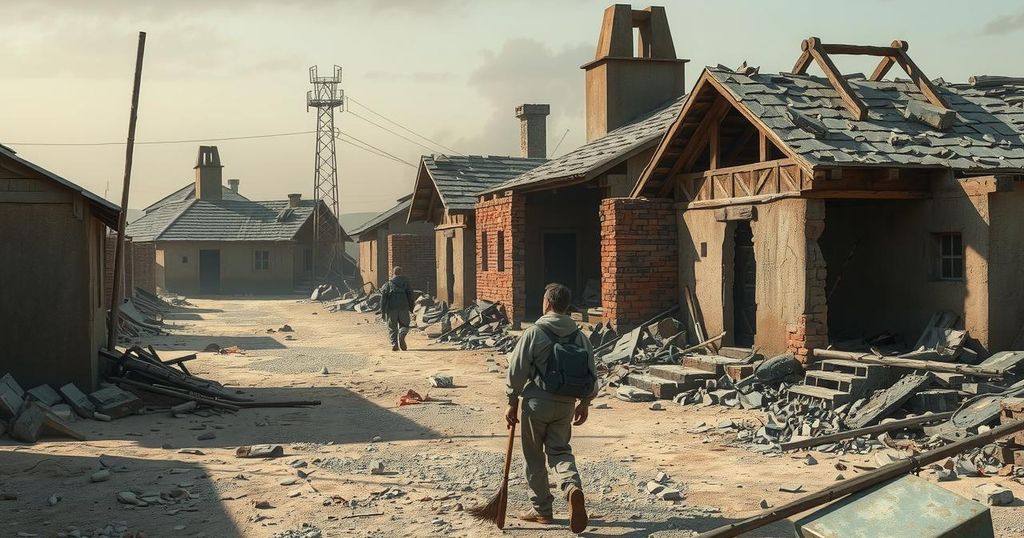Families, including the Banyene family, have returned to their homes in Sake, DRC, after being displaced due to conflict. Their homes are largely damaged, and they face lingering dangers such as unexploded bombs. Although some markets are reopening, economic recovery is slow with many facing looting and lack of access to their fields. The situation remains precarious as communities struggle to rebuild their lives amidst ongoing challenges.
The Banyene family has returned to their home in Sake, eastern Democratic Republic of Congo, only to find it damaged, with remnants of conflict lingering around them. Much of their former residence consists of a dilapidated wall and a sagging metal roof, while the grounds are peppered with shell casings from gunfire. This situation is the outcome of strife involving the Congolese army and the M23 armed group, which had recently occupied their hometown.
Post-conflict, the Banyenes and many others from Sake were previously displaced and residing in a camp near Goma, approximately 20 kilometers away. However, in late January, following a swift offensive by the M23, these individuals were ordered to return to their homes. The camps, housing hundreds of thousands, rapidly emptied, causing a significant influx back to Sake, enabling families to reclaim their land despite the arduous conditions.
While some semblance of normalcy has returned to Sake with many shops reopening and markets bustling with goods, the community still faces challenges. The physical destruction prevalent in the area is evident; families such as the Banyenes are forced to live in makeshift shelters while grappling with the dangerous remnants of unexploded bombs in the fields, halting agricultural activities.
Many returning villagers have reported the looting of their homes, further compounding their difficulties. Access to their fields is frequently blocked by new residents, contributing to instability. This situation is significant as approximately 44 percent of returnees in the North and South Kivu provinces have found their properties occupied. Despite the M23’s supposed restoration of safety, widespread economic recovery has proven elusive, with banks remaining closed and the overall purchasing power of residents dwindling
Business activity in key commercial zones, such as Minova, has slowed considerably, evidenced by empty markets and reduced trading hours, further undermining the community’s recovery. Shopkeepers express difficulty in finding buyers amidst a significant shortage of money.
In summary, while the return of families to their homes in Sake reflects a desire for normalcy, the impacts of ongoing insecurity, economic difficulties, and the scars of conflict present formidable challenges that continue to hamper recovery in the region.
The return of families to conflict-affected areas in eastern DRC, particularly in Sake, showcases a complex and challenging recovery process. Despite some improvements in security and the reopening of shops, families are contending with the destruction of their homes, economic instability, and lingering threats from unexploded ordnance. The journey to rebuilding their lives is fraught with challenges, highlighting the ongoing need for humanitarian assistance and economic support in the region.
Original Source: jordantimes.com




